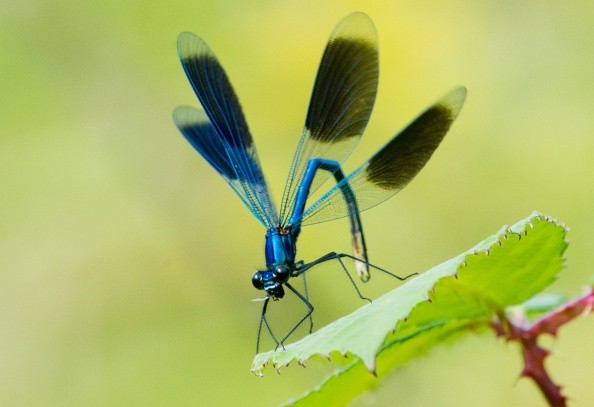
A recent report explained that the new species of small red-eyed damselfly in the United Kingdom could impact the population of native dragonflies.
Dragonflies and damselflies may look similar, but they are different in many wings: from wings and ecological importance.
According to the British Dragon Fly Society, the species of dragonflies have two essential sub-orders, the damselflies (Zygoptera) and dragonflies (Anisoptera).
The latest study was also published in Insect Conservation and Diversity Journal. It is also available to read on Phys.org's website.
The UK Centre conducted the new study for Ecology & Hydrology and the University of Exeter.
The emergence of red-eyed dragonflies
The researchers looked into the emergence of new species of damselfly in the United Kingdom and native dragonflies.
According to the research, the new species came from Europe and reached parts of the UK due to climate change and shifting weather patterns.
To further determine the possible risks, the researchers looked into the data from the British Dragonfly Society.
The study considered the records of dragonflies based on 50,00 site visits from the years of 2000 until 2015.
Then, the researchers investigated the 17 native damselflies and dragonflies, noting how the small red-eyed damselflies could impact the native population of the said insects.
The study found minimal risks in the results. According to the reports, the researchers found the following observations:
- Reports showed that the emergence of red-eyed managed to establish a place in the country, with no signs of harm against native species.
- Meanwhile, the researchers also discovered that the arrival of small red-eyed damselflies in habitats resulted in a decline of native two damselflies.
- There is a possibility that the habitat with good food sources shows more competition between the two said species.
In addition, Dr. Regan Early explained that understanding the possible impact of new species is vital for the environment. Dr. Early is from Centre for Ecology and Conservation.
Did you know? Learn more facts about damselflies.
Dragonflies are more common than damselflies.
According to New World Encyclopedia, the species of damselfly comes from the order of Odonata.
The report explained that damselflies have been essential for the ecosystem and aesthetic values. They thrive in different environments, except in Antarctica.
New World Encyclopedia added that damselflies are helpful for the food chains and controlling pests and mosquitos.
In terms of laying eggs, dragonflies and damselflies have similarities in laying in water vegetation. It means that the insect can start with swimming skills before flying!
Meanwhile, dragonflies also contribute to the environment and fantastic facts!
According to the Smithsonian Magazine, dragonflies are experts in flying that can go around without much effort. They have extraordinary good visual prowess.
Dragonflies are good hunters that grab their prey using their feet.
The report said that there are about 5,000 dragonfly species in the world.
Moreover, AZ Animals reported that dragonflies are considered prehistoric species, existing on earth for about 300 million years.
Related Article : Frogs in Central and South America Have Rare Ability to Changing Transparent Appearance
For more news, don't forget to follow Nature World News.
© 2026 NatureWorldNews.com All rights reserved. Do not reproduce without permission.





